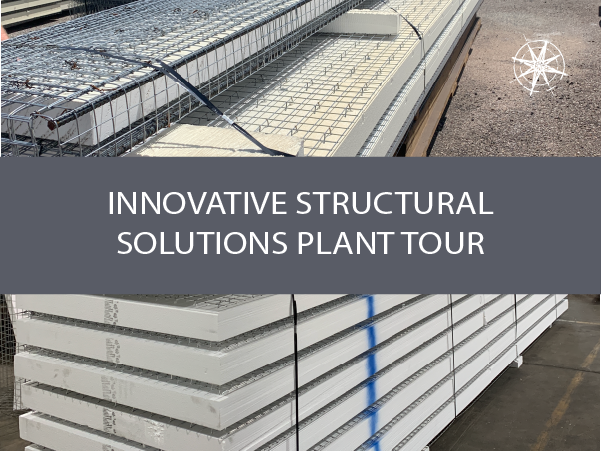
Innovative Structural Solutions Plant Tour
Most people in the AEC industry are familiar with tilt-up, masonry, and traditional framing methods, but there’s another technique worth knowing about and it’s being used right here in Utah: 3-D SCIP Panels. SCIP (Structural Concrete Insulated Panels) are a great alternative to both tilt-up and traditional framing because they provide some unique thermal and sound insulation benefits as well as potential savings in construction costs.
Here’s how it works: The panel starts with a polystyrene core, followed by two outer layers of welded wire mesh with truss wires piercing through the core and welded to the mesh. Once these light weight panels are in place and all utilities are roughed in, shotcrete is applied and finished in any number of finish types. The end result is a wall capable of reducing heat, cold, and sound transmission by 50%-80%, and earthquake protection for ground acceleration of .4g (about 7.5 on the Richter scale).
If you’re thinking this is new and unproven, think again. This method was developed in Austria in 1962 and has been used throughout Europe and parts of the United States for decades. Now these panels are manufactured right here in Utah. Innovative Structural Solutions (Innstruct), based out of Morgan, Utah manufactures these panels using patented high-speed machinery that results in zero-waste production. We recently got to tour the manufacturing plant with Innstruct’s Kim Blackburn. As a non-engineer myself, I was impressed with a few things. First, the sound insulation is the real deal. The plant has some rooms built using their 3-D panels and even with loud machinery operating just outside the room, I could barely hear any of it, but at the same time, I didn’t feel like I was locked in a concrete box. The finish work looked just like the inside of any building with no visible signs of what framing materials have been used. John Charchenko, P.E. is one of our structural engineers here at FOCUS with experience designing buildings to use these 3-D panels. John lauds the durability and longevity of 3-D panels, expressing that using them means “building a 150 year home instead of a 75-year home”.
If you have a structural engineering project coming up, give us a call. John and his team can talk over the design with you and determine how 3-D panels may be just the right solution for your project.

Leave a comment
You must be logged in to post a comment.